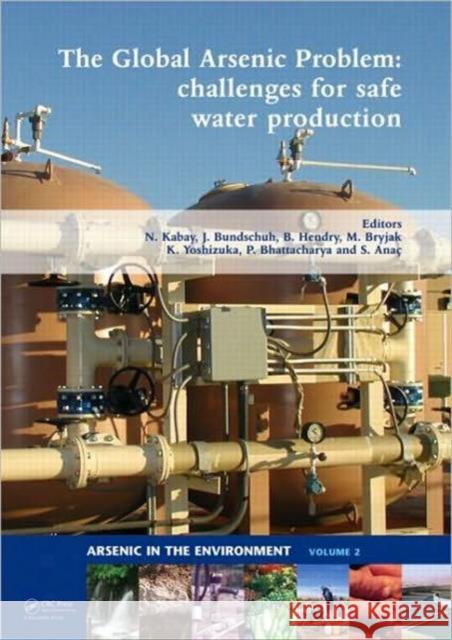The Global Arsenic Problem: Challenges for Safe Water Production » książka
The Global Arsenic Problem: Challenges for Safe Water Production
ISBN-13: 9780415575218 / Angielski / Twarda / 2010 / 270 str.
The Global Arsenic Problem: Challenges for Safe Water Production
ISBN-13: 9780415575218 / Angielski / Twarda / 2010 / 270 str.
(netto: 950,38 VAT: 5%)
Najniższa cena z 30 dni: 957,11
ok. 22 dni roboczych.
Darmowa dostawa!
A prevalent and increasingly important issue, arsenic removal continues to be one of the most important areas of water treatment. Conventional treatment plants may employ several methods for removing arsenic from water. Commonly used processes include oxidation, sedimentation, coagulation and filtration, lime treatment, adsorption onto sorptive media, ion exchange, and membrane filtration. However, in the most affected regions, large conventional treatment plants may not be appropriate and factors such as cost and acceptability as well as performance must be considered. This book, published in cooperation with leading experts in this field, provides a thorough analysis of the problems, solutions, and possible alternatives to achieve safe water production on a global scale.
Water is an important natural resource and a key component of our environment. The quality of water has been deteriorated as a result of the rapid population growth, unplanned urbanization and environmental pollution caused by industrialization. In addition to these, the global warming and climate change have begun to threaten the water resources all over the globe. At present, the decrease in water resources has already reached critical dimensions. Water used for irrigation, as well as for domestic and industrial purposes, is negatively affecting the quality of water and placing great demands on the quality of water resources, the capacity of which is already limited. Therefore, problems pertaining to water consumption need to be solved on a global scale. Arsenic contamination of groundwater is prevalent throughout the globe and is of increasing concern, necessitating the need for effective treatment to provide safe drinking water to communities. Arsenic removal is one of the most important areas of water treatment. Conventional treatment plants may employ several methods for removing arsenic from water. Commonly used processes include oxidation, and sedimentation, coagulation and filtration, lime treatment, adsorption onto sorptive media, ion exchange, and membrane filtration. However, in the most affected regions large conventional treatment plants may not be appropriate and factors as cost and acceptability as well as performance must be considered. This book, published in cooperation with leading experts in this field, will proved a thorough analysis of the problems, solutions and possible alternatives to achieve a safe water porduction on a global scale.











